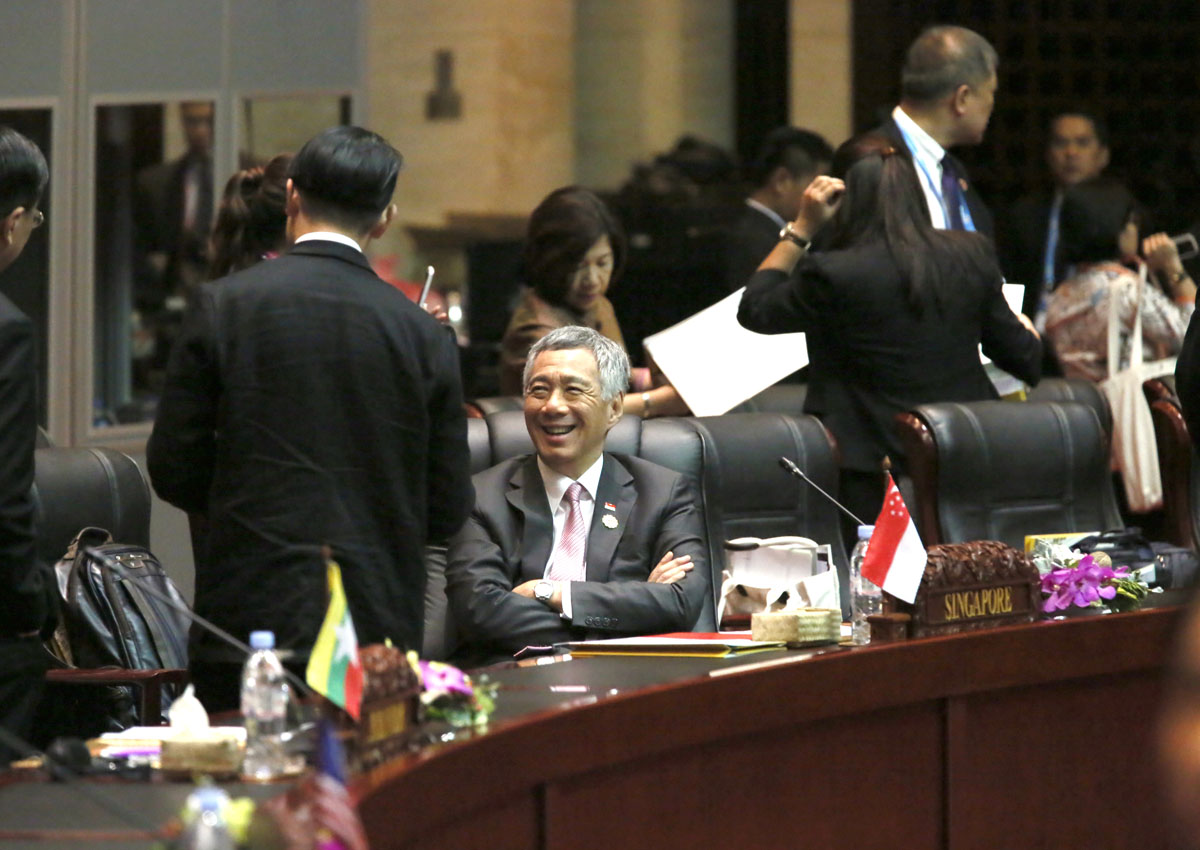Whether there is clear progress on managing the South China Sea disputes will be seen by the middle of next year, when China has committed to complete a framework for a legally binding code of conduct (COC) together with ASEAN, Prime Minister Lee Hsien Loong has said.
A COC has proven elusive 14 years after ASEAN and China adopted a less binding Declaration of Conduct in the resource-rich waterway, to manage their territorial disputes. China has overlapping claims in the sea with four ASEAN states.
But Chinese Foreign Minister Wang Yi proposed in July that ASEAN and China “fast-track” negotiations for the COC.
Mr Lee, in his remarks at the East Asia Summit earlier yesterday, said he welcomed China’s commitment to work with ASEAN to complete a framework for the COC by the middle of next year.
Speaking to reporters on the final day of the ASEAN summit yesterday, Mr Lee said ASEAN members have a range of perspectives on the South China Sea because the waterway is fundamental to many countries’ security calculations and even the way they view the world.
He referred to points he had made during this year’s National Day Rally speech on why the South China Sea has proved so difficult a topic for everyone to be on the same page: It is not just a dispute about territory, but also the rights of the international community such as freedom of navigation and about how an international disagreement can be peacefully resolved.
“I don’t think that differences in perspectives on the South China Sea can easily be overcome, because they are fundamental to the strategic situations that the countries are in, and, therefore, the way they see the world: What are the threats, what are the opportunities, who are the allies, who are the neutrals, who are the potential adversaries,” he said.
These were realities of international relations, however, and “we have to navigate and find our position, find our way through such an unpredictable world”.
But this does not mean the situation cannot be managed or should be ignored, as tensions in the sea have a tangible, if hard to measure, effect on the economy.
The region has prospered until now because there has been peace, allowing countries to co-operate and deepen their inter-dependence on trade and investments, Mr Lee said. Conversely, tensions in the South China Sea lower investor confidence.
“When you have tensions in the South China Sea, the confidence – there is an impact when people make decisions on investments,” he said. “They won’t say that this is a decisive factor, but it’s one of the things which affects their decision.”
If the situation is allowed to deteriorate to the point where there is an encounter or mishap there, “confidence will really be shaken and you will have a big problem”.
“So it’s one of those situations where you don’t feel that it is good, but neither can you say, ‘I can count how many dollars it has cost me’,” he said. “It’s a minus for me, I know it, and we really should mitigate that risk as much as we can.”
Noting that the summit in Laos is the first since ASEAN declared that it has formed an ASEAN Community in Kuala Lumpur last year, Mr Lee said the 10 countries in the grouping must now find the resolve to forge ahead and integrate more closely with one another.
At this year’s summit, members adopted a five-year work plan that aims to narrow the development gap, enhance the region’s competitiveness and support the implementation of three Community Blueprints which ASEAN leaders adopted last November.
“As always, after you’ve made an achievement, that’s the basis from which you have to keep on moving forward,” said Mr Lee. “And we’re trying to keep on developing and deepening the co-operation we have together.”
yanliang@sph.com.sg

This article was first published on September 9, 2016.
Get a copy of The Straits Times or go to straitstimes.com for more stories.































































































